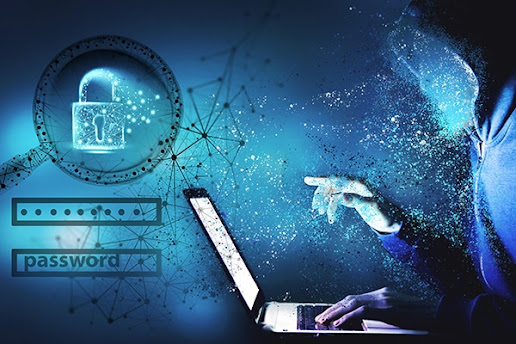In today's interconnected digital world, cybersecurity plays a pivotal role in safeguarding sensitive information and protecting individuals and organizations from malicious activities. With the increasing reliance on technology, the need for robust cybersecurity measures has become more critical than ever. This article explores the significance of cybersecurity, different types of threats, essential cybersecurity measures, its importance in various sectors, and the future of cybersecurity.
Types of Cybersecurity Threats
Malware
One of the most prevalent cybersecurity threats is malware. It refers to malicious software that infiltrates systems without consent, intending to disrupt operations, steal data, or gain unauthorized access. Common forms of malware include viruses, worms, ransomware, and spyware. These threats can severely impact both individuals and organizations by compromising data integrity, system stability, and user privacy.
Phishing Attacks
Phishing attacks are another significant cybersecurity concern. In this type of attack, cybercriminals masquerade as trustworthy entities to deceive individuals into revealing sensitive information such as passwords, credit card details, or personal data. Phishing attacks are often conducted via fraudulent emails, messages, or websites and can lead to identity theft, financial loss, or unauthorized access to personal accounts.
Data Breaches
Data breaches involve unauthorized access or disclosure of sensitive information. Cybercriminals exploit vulnerabilities in systems or networks to gain access to valuable data, including personal, financial, or intellectual property information
Data breaches can have severe consequences for individuals and organizations. They can result in financial losses, damage to reputation, legal implications, and loss of customer trust. Protecting personal and sensitive information is crucial to prevent such breaches.
Cybersecurity Measures and Best Practices
To mitigate cyber threats and ensure a secure digital environment, implementing cybersecurity measures and adopting best practices is essential. Some key measures include:
Strong Passwords and Authentication
Using strong passwords is a fundamental step in safeguarding accounts and systems. Strong passwords should be complex, consisting of a combination of letters (uppercase and lowercase), numbers, and special characters. Additionally, implementing two-factor authentication provides an extra layer of security by requiring users to verify their identity through multiple methods.
Software Updates and Patches
Regularly updating software and applications is crucial as it helps to fix security vulnerabilities. Software developers frequently release updates and patches that address known security issues. By keeping systems up to date, individuals and organizations can stay protected against known threats.
Network Security
Implementing robust network security measures is vital to defend against cyber attacks. This includes deploying firewalls, which act as a barrier between internal networks and external threats. Secure Wi-Fi networks with encryption protocols such as WPA2 or WPA3 should also be employed to prevent unauthorized access.
Employee Education and Awareness
Employees play a significant role in maintaining cybersecurity. Educating and training employees on cybersecurity best practices and potential threats can help create a security-conscious culture within an organization. It is important to raise awareness about phishing attacks, social engineering tactics, and the importance of reporting any suspicious activities.
Backup and Recovery Plan
Regularly backing up data and developing recovery plans are critical to minimize the impact of cyber incidents. Backups should be stored securely and tested periodically to ensure data integrity. Having a well-defined recovery strategy in place can help organizations quickly restore operations after a cyber attack.
Cybersecurity in Different Sectors
Cybersecurity is essential across various sectors to protect sensitive information and maintain operational integrity. Let's explore its significance in some specific sectors:
Banking and Financial Institutions
In the banking and financial sector, cybersecurity is of paramount importance. Financial institutions deal with vast amounts of sensitive data, including customer financial information and transaction records. Implementing robust security measures is crucial to prevent unauthorized access, identity theft, and financial fraud.
Healthcare
The healthcare industry holds a wealth of valuable and confidential patient information. Protecting medical records, personal health data, and research findings is vital to maintain patient privacy and prevent unauthorized access. Ensuring the security of healthcare systems is crucial to avoid potential harm to patients and maintain the trust of the public.
Government and Defense
Government organizations and defense establishments handle highly sensitive information related to national security and public safety. Cybersecurity is critical to safeguard classified data, infrastructure, and communication channels. Governments must stay vigilant to protect against cyber attacks that can disrupt critical services and compromise national security.Future of Cybersecurity
As technology continues to evolve, so do cyber threats. It is crucial to stay ahead of cybercriminals by constantly innovating and adopting emerging technologies in the field of cybersecurity. Artificial intelligence (AI) and machine learning (ML) are being utilized to identify patterns, detect anomalies, and enhance threat intelligence. Blockchain technology shows promise in securing transactions and data sharing. As the Internet of Things (IoT) expands, ensuring the security of interconnected devices will become increasingly important.
Conclusion
In today's digital landscape, cybersecurity is not just a choice, but a necessity. The ever-evolving nature of cyber threats requires individuals and organizations to remain vigilant and proactive in implementing cybersecurity measures. By understanding the different types of threats, adopting best practices, and prioritizing cybersecurity in various sectors, we can create a safer and more secure digital environment for everyone.


.jpeg)
.jpeg)



No comments:
Post a Comment